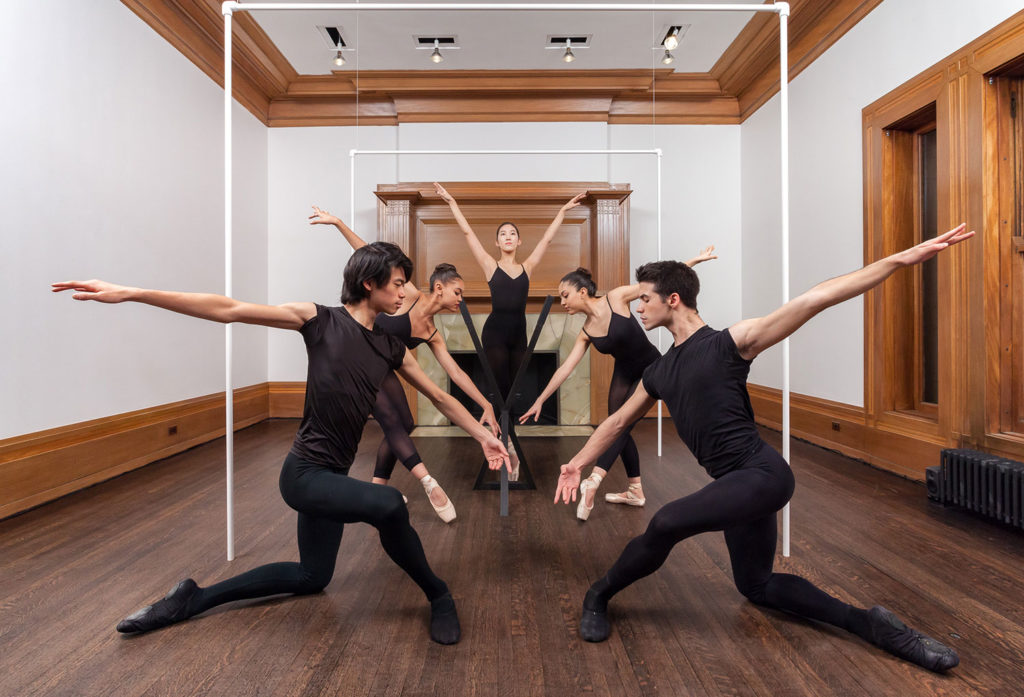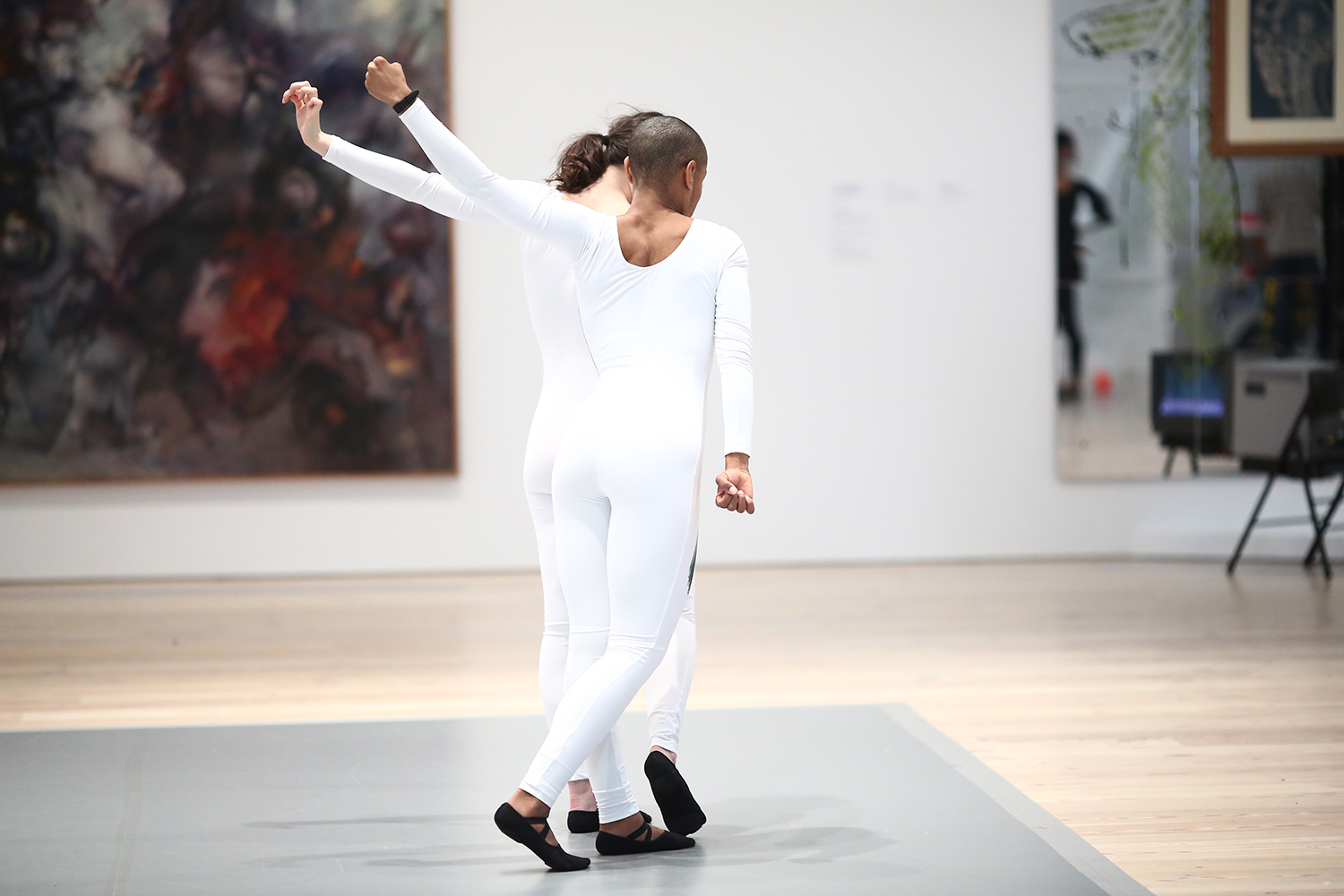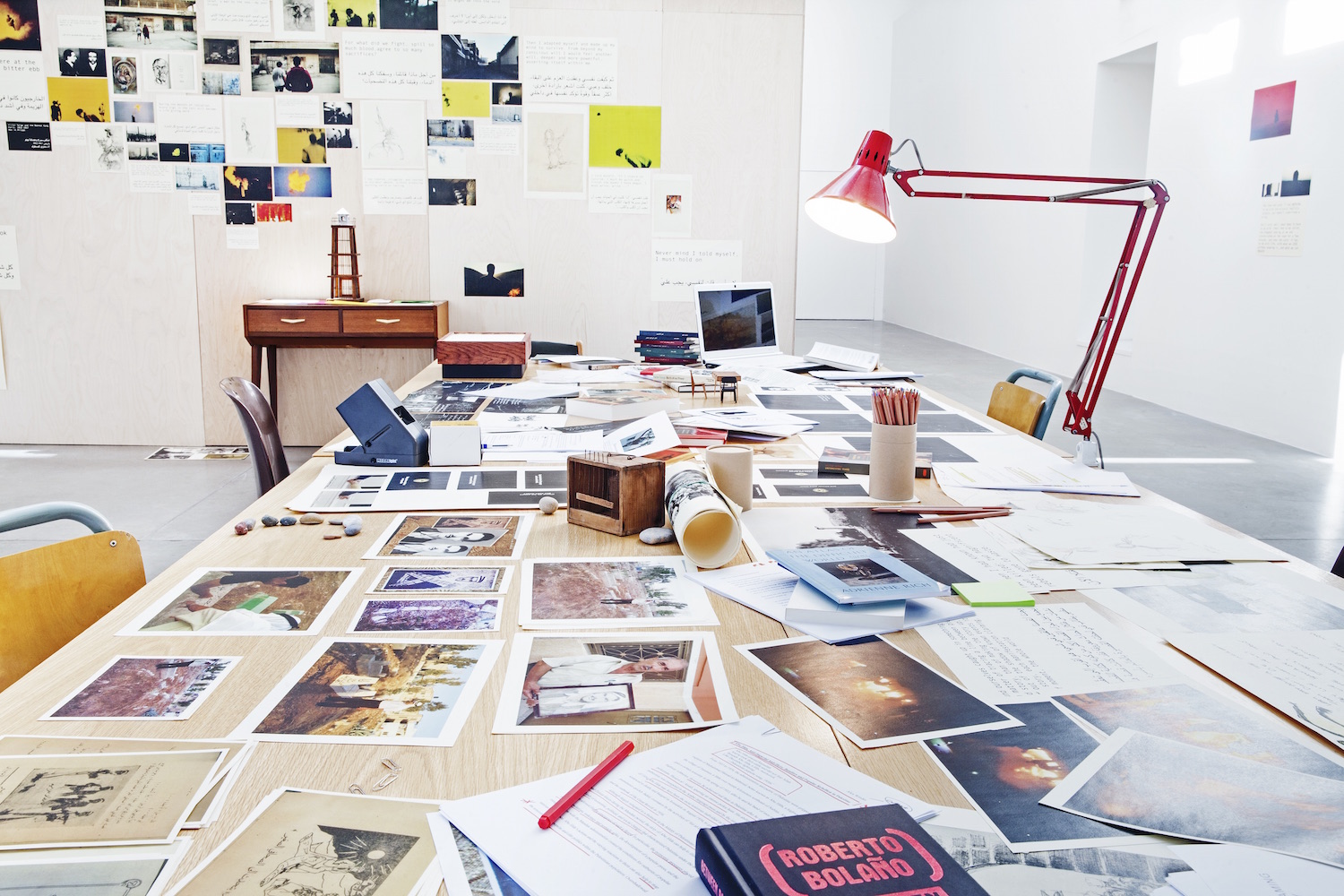Dance Office is a column dedicated to contemporary dance and performance art.

As a child, my biggest dream was to become a ballet dancer. Fascinated as I was with ballet’s extreme bodily self-discipline and ethereal elegance, for years I begged my mother to buy me a tutu and bring me to a class in a nearby town. When she finally caved in and brought me to my first rehearsal, I was terrified by the whole situation; the tyrannical teacher as much as the athletic demands that was suddenly put on my body. I didn’t stay for more than 10 minutes, and I realized that my affinity for classical dance was predominately aesthetic, and later, highly erotic.
I was reminded of this as I admired the elegant choreographed movements of five young ballet dancers as they perused in unison through the ornamented wooden interiors of the Graham Foundation in Chicago, as a part of Brendan Fernandes’ latest performance-installation The Master and Form. As hinted at in the title, the work takes the masochistic power dynamics of ballet into the realm of sculptural formalism, presenting the dancer’s athletic bodies as para-objects that nonetheless forever exists in organic flux, dynamically negotiating space, desire, and physical endurance.

A series of exquisite dark-tainted wooden structures with added leather fittings, designed in collaboration with architecture and design collaborative Norman Kelly, occupied each their own room of the Prairie-style building, acting as “training stations” for the group of dancers. Not unlike real-world instrument such as ballet foot-stretchers—meant to minutely enhance the arch of their foot—these structures, some anthropomorphic in shape, serve to extend, improve, but also support the dancer’s body as it poses, leans, or stretches. Catching a ballerina in rehearsal is a big faux-pas; and not surprisingly, the effect is one of deep and projected masochistic fascination. Several delineated, cage-like structures serve as “safe spaces” for the dancers to decompress if and when needed, which only further complicates the standard representation of the dancing body.
Fernandes’ wide-spread theoretical interests skillfully extended this highly site-responsive scene construction, set in a former family home, into a larger web of social and aesthetic references, including post-colonial identity, queer domesticity, and BDSM culture. Ballet’s courtly bows (a derivate of greetings for Louis the 14th), consensual Dom/sub sexuality, and the politics of fetishising the bodies of others: Fernandes shows that despite the complexities of power, it always manifests through the body as it interacts with space.


